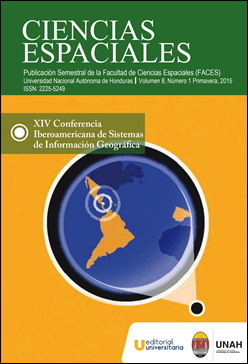Geostatistical evaluation models applied to air pollutant exposure to PM10 in Chile
DOI:
https://doi.org/10.5377/ce.v8i1.2060Keywords:
Kriging, particulate matter, exposure to pollutants, geographical information systemsAbstract
Is modeled exposure to the air pollutant particulate matter (PM10) starting from registered data of 108 monitoring stations belonging to the National Air Quality System, using applied geostatistics through ordinary Kriging method, for its attribute of representing phenomena whose values vary based on spatial location of points of observation.
The procedure is conducted in three stages: (1) exploratory data analysis, to determine whether it is necessary or not the data transformation and removal of bias in them. (2) Structural analysis to calculate the experimental semivariogram and adjustment to six selected theoretical mathematical models. (3) Prediction for obtaining prediction map and map standard errors of prediction.
The obtained results have allowed the creation of an estimated exposure surface of PM10 values, which among its main characteristics, presents a spatial distribution with strong regional bias, spatially concentrating in mining cluster territories and metropolitan areas. The largest prediction errors occur in low population density areas and, monitoring stations in the Atacama Desert and the Andes.
Revista Ciencias Espaciales, Volumen 8, Número 1 Primavera, 2015; 441-457
Downloads
1831




